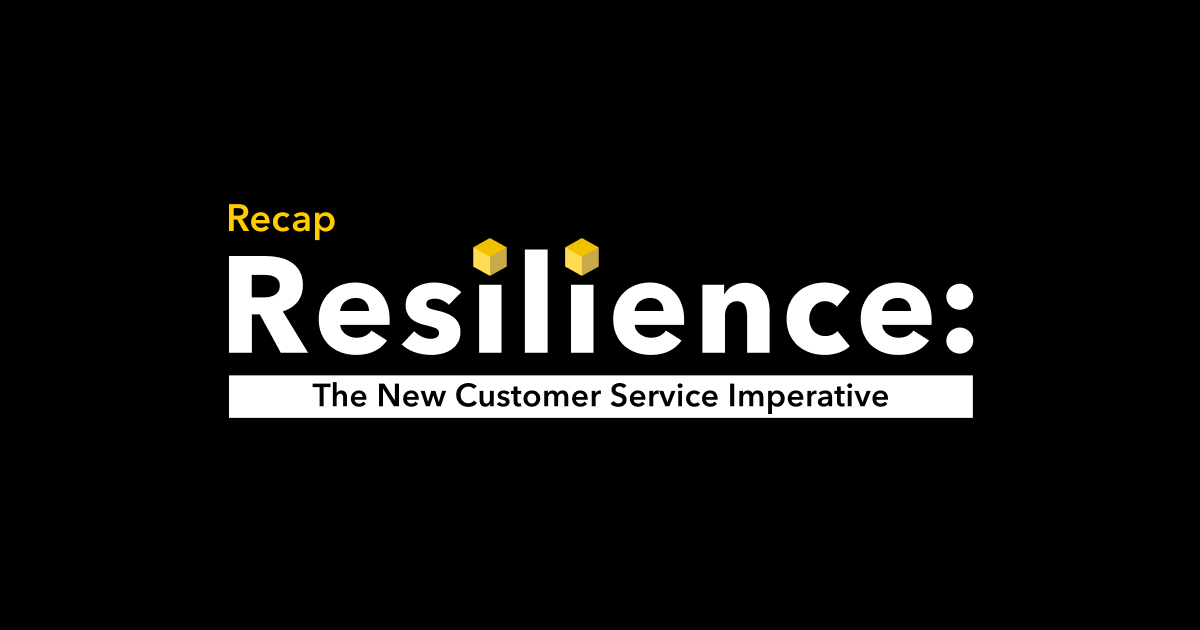‘Tis the season. For many consumer goods companies, retailers, and e-tailers, the holidays will make or break their fiscal year. Execution is crucial — and that goes beyond just executing successful promotions, transactions, and delivery. The holidays will stretch some customer service teams to their breaking point — and sometimes beyond.
That’s when on-demand experts — outside the contact center — can help.
The challenge of surges: expected and not
“Deloitte is forecasting a 25% to 35% increase in 2020 holiday e-commerce sales compared with the same period in 2019.” (SOURCE: Deloitte)
Dealing with surges is arguably today’s most difficult customer service challenge. Forecasts from sales teams months in advance of the holidays give the call center time to adjust their available agent resources or increase their budget for their outsourced BPOs.
Forecasts, of course, are prone to error. A wildly successful Cyber Monday promotion might simultaneously cause jubilation in the C-Suite and panic in the call center. A surge in customer support inquiries in the days and weeks that follow might break some company’s operations. New products, once they get in the hands of customers, might also have unexpected issues, causing call center volume to increase beyond what was planned.
While being ready for expected seasonal surges is tough enough for CX leaders, delivering great customer service during unplanned surges is next-level challenging. COVID-19 has been a customer experience challenge unlike anything our industry has ever experienced. Brick-and-mortar call centers were shut down — at the same time as some industries (e.g. hospitality) saw a massive, unexpected increase in contact center volume from worried and anxious customers.
Meanwhile, the ongoing pandemic is causing continuing levels of shutdowns in different regions — and uncertainty about its impact on holiday sales. Consulting giant Deloitte is expecting lower-than-expected growth in overall holiday, but a 25-35% increase in online shopping and e-commerce.
So, how do you deal with surges if you’re the head of customer support? How can you even plan for typical seasonality during a year when there is no such thing as typical? You do the best you can. And you seek the most flexible and trustworthy resources possible.
How traditional contact centers scale for seasonality
“Our call volume is unexpectedly high. Please wait for the next available operator.”
There’s no real mystery to it: if a customer service leader is expecting surges because of seasonality, they need to find more resources to handle it. Traditionally, that’s addressed in the following ways.
Adding or improving tools: There are a wide variety of tools that can make call centers and their agents more efficient — ranging from software that makes escalation more seamless to hardware that makes agents more productive.
Hiring internal agents and seasonal employees: Companies that already manage their own customer service agents can extend their team, adding part-time or full-time workers on short-term contracts.
Outsourcing customer service to a BPO: Many companies will outsource some or all of their customer service to an external firm. Planning for surges means renting more “seats” at these facilities, whether they are brick-and-mortar centers or remote customer service specialists.
Each of these approaches has pros and cons.
New tools can incrementally increase a contact center’s capacity — but won’t provide a boost big enough to account for significant seasonal surges.
Hiring employees can yield a wider pool of agents that can assist customers, but that requires months of planning and proper training. And if it’s a temporary employee for the holidays, that means doing it all over again the following year.
Using a BPO contact center and increasing for seasonalities takes the burden off the companies for training — but the customer experience may be inconsistent. While training and management are owned by the BPO, it can be expensive for companies. According to CloudTask, a single call center agent in the US costs between $25 and $65 per hour.
And then there’s the problem of the unexpected surge. All of these solutions require planning. None of them are flexible enough to account for big unexpected spikes in inquiries.
That’s one big reason why we help our customers tap into expertise in the crowd.
On-demand experts offer flexibility and scale to the contact center
“The Gig Economy is a triple win for customer service. For companies, it allows for great flexibility in staffing during busy and slow times. For ‘giggers,’ they like the flexibility of being called on when needed, the extra money, and work that can be tailored to fit into their lifestyle. And finally, for customers, it means a better service experience, as even during busy times, the company is staffed to deliver fast support when the customer wants and needs it.” — Shep Hyken, customer service and experience expert
If you follow us on social media and read our blog, you know we’re big believers in what our CEO Mike de la Cruz refers to as “resilient customer service.”
The value of a resilient system is that it can respond to both expected seasonal surges and unexpected spikes. One of the key ingredients is a decentralized workforce that can dynamically scale up and down.
“Companies also need a more dynamic approach to its pool of available human agents,” Mike wrote on our blog just a few months after the first COVID-19 outbreaks. “A fixed number of full-time agents simply can’t respond during surges caused by a market disruption. To be resilient, companies need ‘on-call’ agents — which could be flexible part-time workers and/or an on-demand workforce that is paid based on resolving individual cases.”
We help companies leverage on-demand experts, who have a combination of technical know-how and hands-on experience with those companies’ products and services, to provide that scale.
For any expected seasonal surges, we help our customers on-board more than enough vetted experts to our Directly platform. These experts are technical and product specialists paid on a performance basis — rewarded when they successfully resolve issues. There’s no hourly payment or contracted expense — and company leaders can quickly increase or decrease volume of inquiries sent to this community. The experts are able to respond quickly — faster than a typical contact center — based on need in that moment.
Flexibility — even during a crisis.
The past 12 months offers a perfect example for one global gaming giant.
Gaming giant uses crowd to manage holiday and COVID-19 surges
Prior to the 2019 holiday season, Directly helped a global gaming company onboard more than 200 new experts to its expert-powered customer service platform. During the holiday surge, the company’s gaming-related contact center volume increased more than 60% and, as planned, the expert community was able to resolve more than 60,000 questions.
A few months later, the company’s customer support system began to unexpectedly surge due to COVID-19 — as a result of an increase in people playing games with shelter-in-place orders keeping them home.
The customer service leaders were able to quickly respond and send more volume to the on-demand experts on the Directly platform. The crowd network became even more indispensable when call centers in Germany, France, and Italy were shuttered. Thousands of additional support inquiries were quickly routed to trusted experts fluent in the local languages. At one point, more than half of the gaming giant’s global support issues were being handled via experts outside the contact center.
The work that was done to help that company scale during the holidays also gave the customer service team the flexibility it needed for any future surges — including the unexpected ones. Flexibility to ultimately succeed at delivering crucial support during what could have been a disastrous surge caused by the pandemic.
_________________________________
Why Directly experts?
Directly delivers world-class customer service for leading Fortune 500 brands. Captive and outsourced contact center models increasingly can’t keep up with customer service demands, while self-service is only effective at deflecting simple contacts. With Directly Answers, we help you troubleshoot a wide range of technical issues using on-demand experts. And when there are repetitive questions, experts author content that you can serve automatically to resolve the issue. Customers like Microsoft, Samsung, and Airbnb to reduce contact center volume up to 40%, boost CSAT up to 20% and save millions per year. Contact us to set up a demo today.



